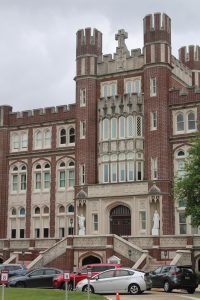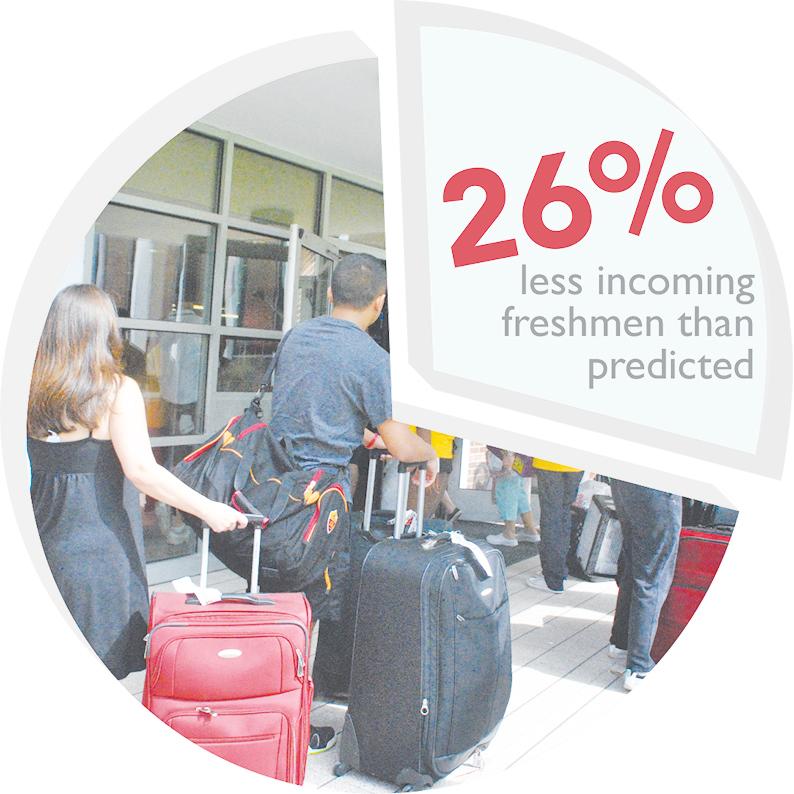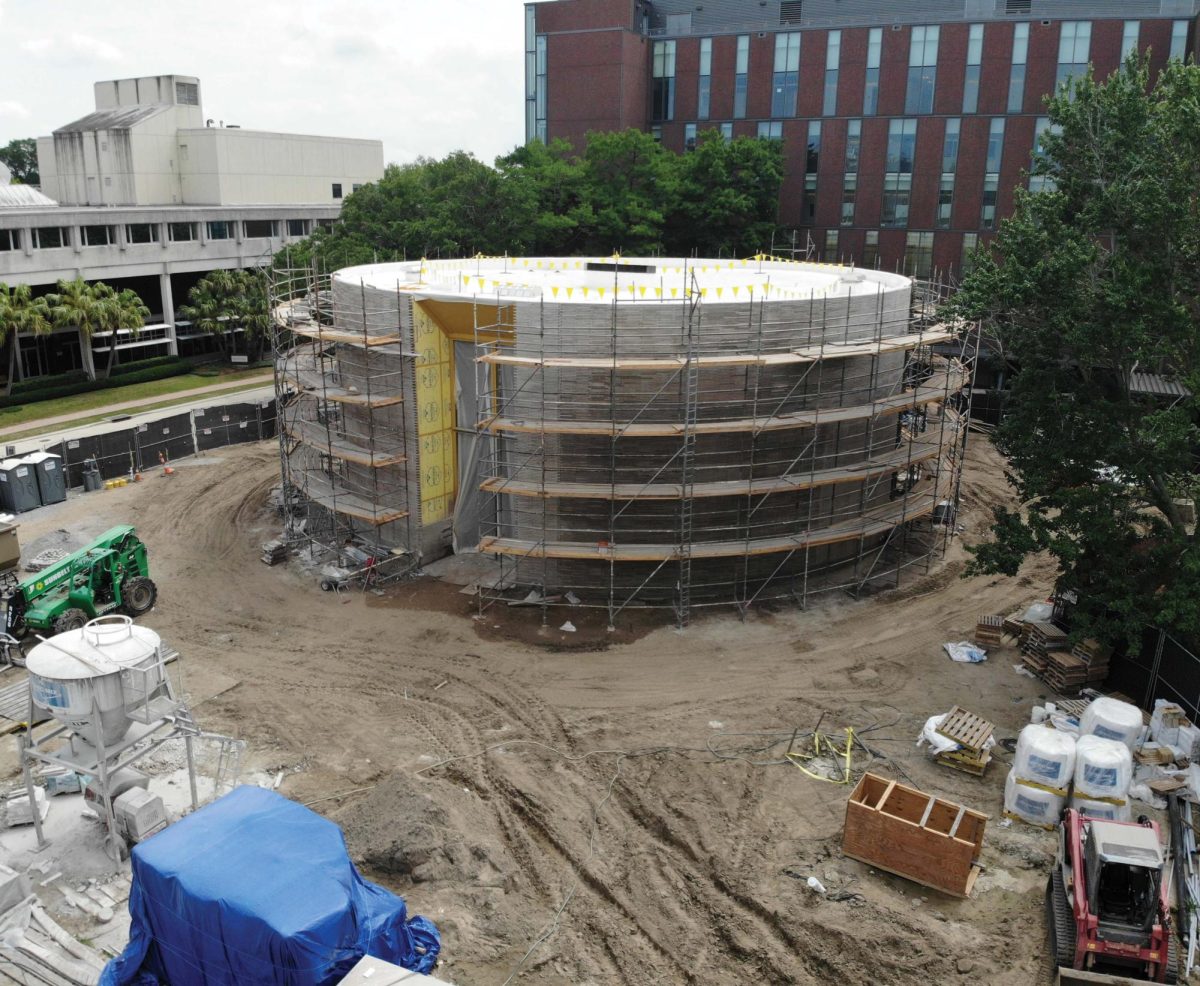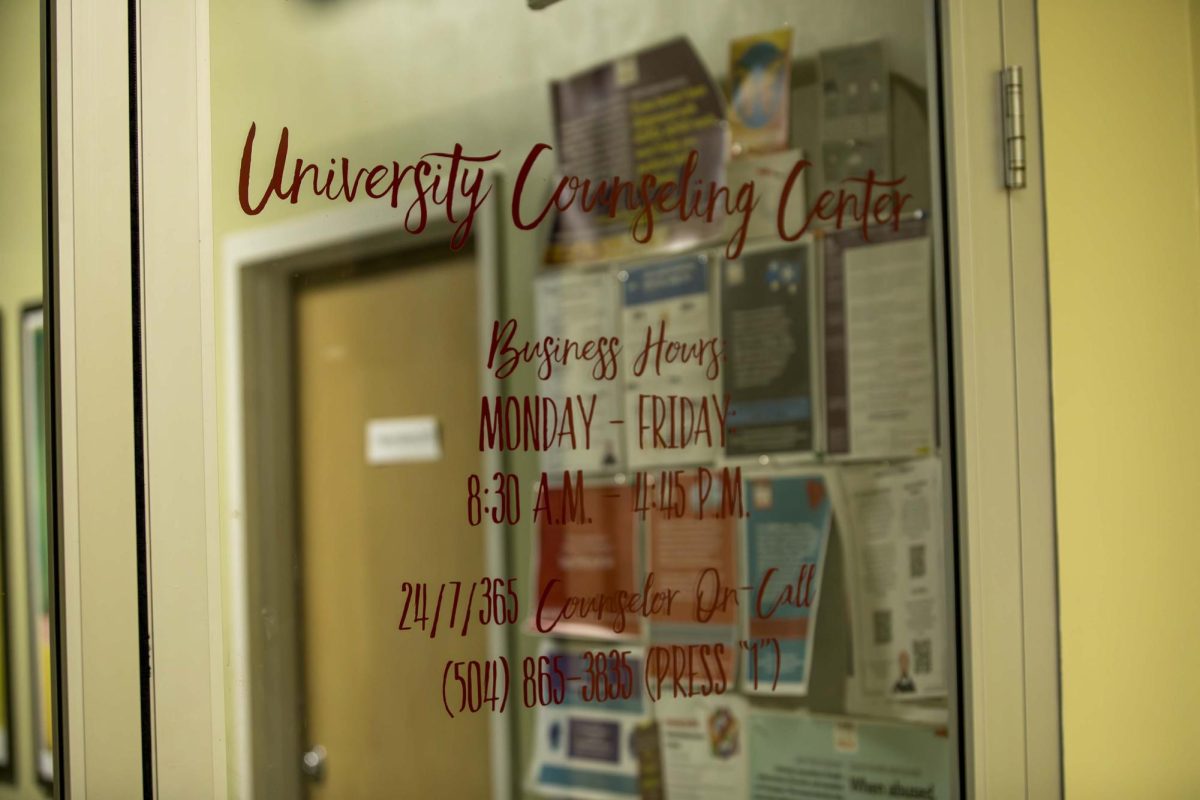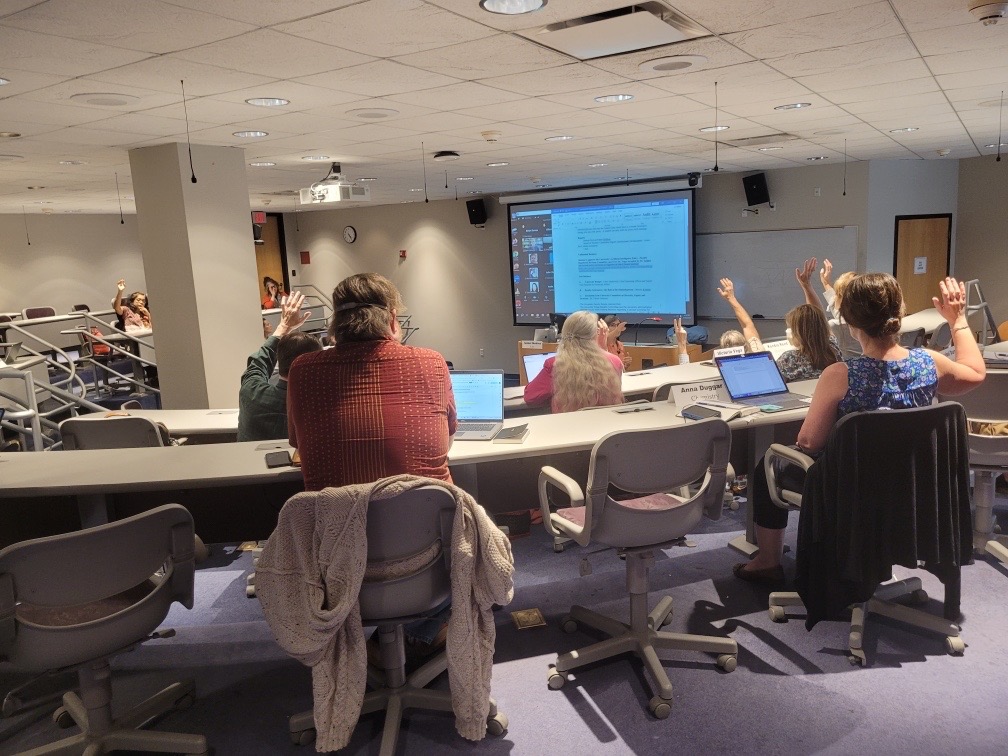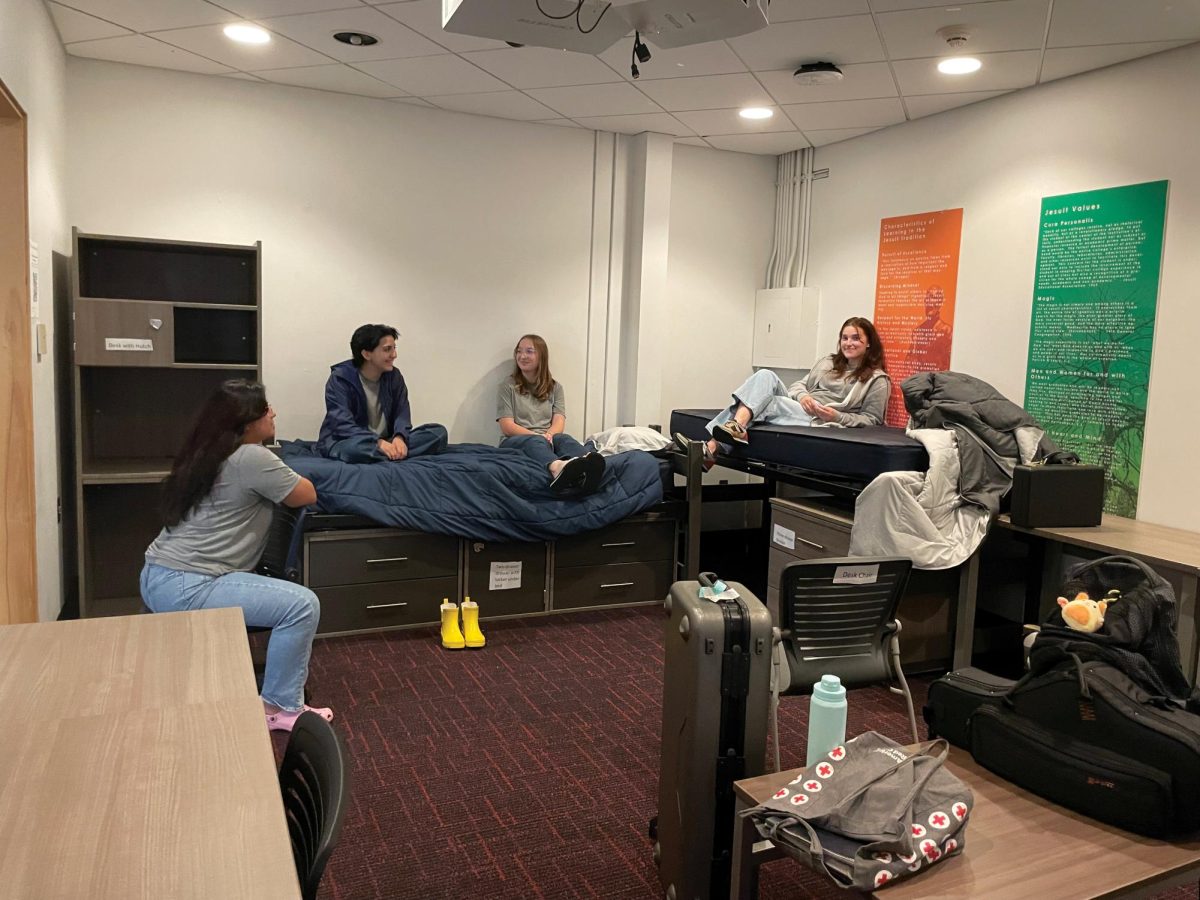Loyola University’s incoming freshman class is 26 percent smaller than anticipated.
Loyola initially set a goal of 875 incoming freshmen, according to a letter sent to the campus-wide community in May 2013 from the Rev. Kevin Wildes, S.J., university president.
As of Aug. 15, 647 incoming freshman students were committed to attend this year, but that number may still fluctuate a bit.
According to Roberta Kaskel, interim vice president of enrollment management, the university expects a “melt,” where a few students may still choose not to attend.
Because of the enrollment shortfall, the university faces an estimated $9.5 million budgetary gap for the 2013-2014 school year.
That figure was based on a worst case scenerio of an incoming freshman class of 600-625 students.
Marc Manganaro, provost and vice president of academic affairs, said that he believes the university could end up a more favorable final number. If that happens, the deficit might not be so deep.
“I can’t tell you exactly what it would reduce by, but it would most likely reduce by $1 million to $2 million,” Manganaro said.
The university has laid out a number of options to deal with the expected deficit, but officials say none of these options will go into effect until later in the fall.
“I am going to review options with the Cabinet and the Faculty and Staff senates. Then, I will make a set of recommendations to the Board at their October meeting,” Wildes said in an email.
Potential strategies include reducing the university’s salary budget and fringe benefits, or taking a drawdown from the endowment.
Other options include offering a voluntary retirement plan that would be funded by a separate pull from endowment.
Maria Calzada, dean of the College of Humanities and Natural Sciences, said she is optimistic.
“I am hopeful that the voluntary retirement program will provide Loyola with a workable solution that will largely take care of the financial issues we face,” Calzada said.
The university has kept Calzada and the other deans informed about the enrollment and budgetary issues throughout the process, she said.
According to Calzada, Manganaro has consulted her for solutions and is intent on upholding Loyola’s academic integrity.
“He has also been very open to suggestions to possible solutions. He is firm in his resolve that academics are at the heart of what we do here at Loyola, and I agree with him completely,” Calzada said via email.
While looking to solve this year’s budget challenge, Loyola is also working to avoid this level of enrollment numbers in the future.
At a recent University Senate meeting, administrators said they hope to draw 850 incoming freshmen next year.
To make that happen, Kaskel said the university is working with two firms, Scannell & Kurz and the Lawlor Group, to assess Loyola’s ability to attract new students.
“We have engaged two nationally known enrollment management firms to work side-by-side with us, not just in enrollment but across the university,” Kaskel said.
Kaskel said that Scannell & Kurz specializes in understanding families’ economic strains in college choice. She said she believes that Scannell & Kurz will help Loyola ensure “that we are aiding in a way that is realistic for a family to enroll.”
The Lawlor Group specializes in university marketing and branding, Kaskel said. The group will be on campus the first week of classes talking to members of the community to examine how the university “messages” to students, Kaskel said.
Many national experts say that while college enrollment is down nationwide, opportunities still abound for universities that position themselves competitively.
Philip Oreopoulos, research associate for the National Bureau of Economic Research, said he believes enrollment declines at universities in general are not a national trend. He said the nation’s current economic landscape is pushing more people to see a value in universities.
“It appears to a very good investment,” Oreopoulos said.
Oreopoulos wrote the report “Making College Worth It: A review of Research on the Returns of Higher Education,” issued May 2013.
In the review, Oreopoulos said he believes attending universities will benefit students if they choose schools based on a number of factors, including focusing on programs that the student intends to complete.
He said he believes when students are faced with a choice between similar programs at a private and public university, they will often pick the public option due to the lower cost, which creates a competitive and recruiting challenge for private universities.
On the whole, Loyola officials are optimistic things can turn around here.
“We think we do a good job, but we want to do a better job in telling our prospective families in very compelling ways what is the strength of a Loyola education, and how do we work with students to transform their lives while they’re with us,” Kaskel said.
Karl Gommel can be reached at [email protected]






